We were excited to implement our plan to visit
International Falls, home to Voyageurs National Park (VNP), during our days
off from volunteering at the Edge of the Wilderness Discovery Center in Marcell, Minnesota. We headed out by 8 a.m. on Maximus the Trike, traversing on MN-6. It was a lonely
drive for the first 45-minutes—only a half dozen other cars were traveling on
either side of this roadway. Then we
reached Big Falls and the intersection with US-71. While Dad fueled up Maximus, Mom and I read
the interpretive signs. Big Falls’ first
European settler arrived from Scotland in 1877.
The town was originally named Ripple, but its name changed to Big Falls
in 1904 when the town incorporated. Its
tagline is In the Heart of the Wilderness. We visited the County Park in Big Falls,
which is a hidden gem. A beautiful
setting overlooking small waterfalls, the Park contains 32 RV sites that have
electric and water hookups. A dump
station is available as well. Several of
the sites are big-rig friendly, i.e., they could fit our Big Boomer/Suite
Retreat set-up easily. All for just
$30/night. Even better, you can book for
a week ($180) or even a month at a time ($540).
Furthermore, I did a full inspection of their facilities and can report
that the Park has ultra clean restrooms and showers if you need/want to use
them.
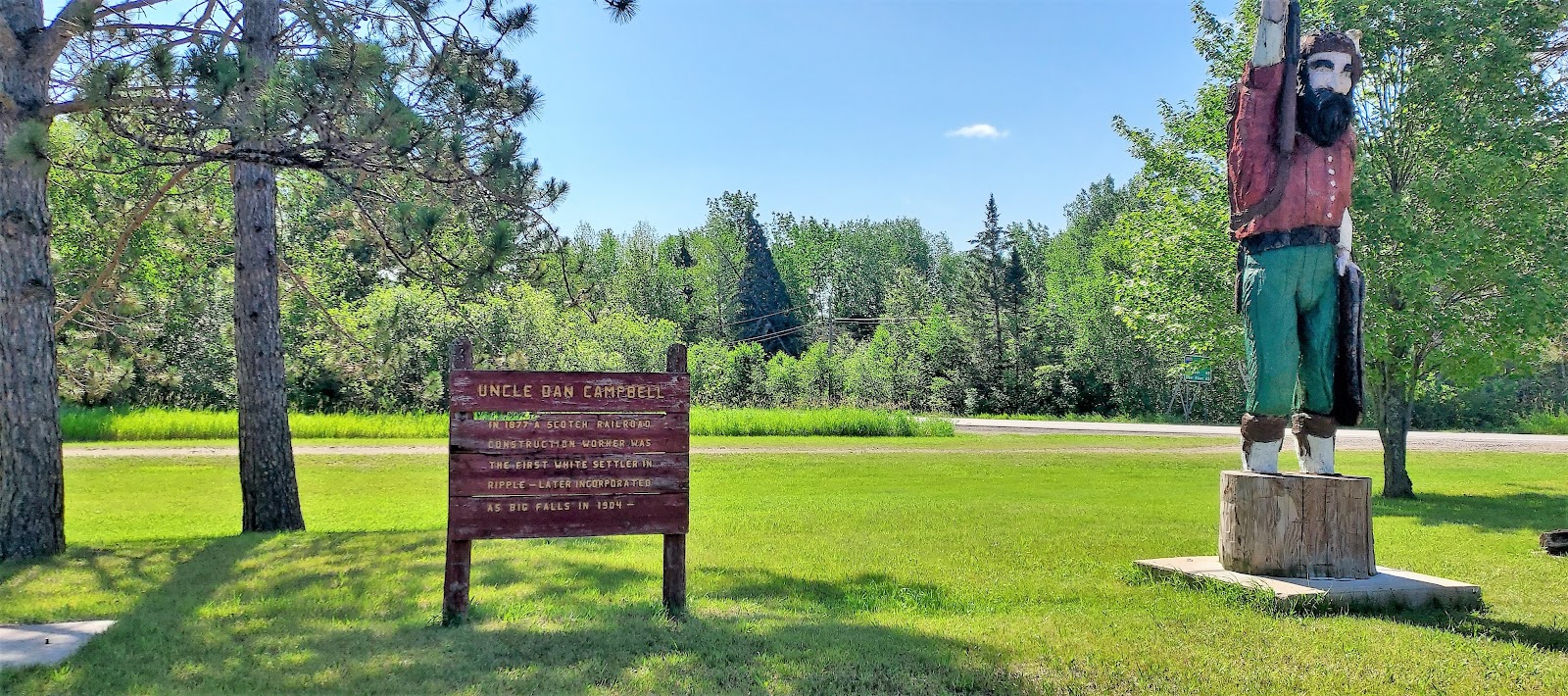
 |
| The "Falls" at Big Falls. |
 |
|
We drove the other hour to International Falls, arriving
just as a storm was brewing. This neck
of the woods has suffered from an inordinate amount of rain and subsequent
flooding this year, so much so that VNP has pushed back the commencement of
Park boat rides from July 9 to July 17.
Bummer! Our 3-day getaway here is
over on July 14! Oh well, we will do as
much as we can on this visit. We sought
out a place for lunch, consulting Trip Advisor.
Unfortunately, 3 among the list of “best” eateries in International
Falls are all shuttered and/or for sale. Seemingly, COVID lockdowns in 2020 and
a drought in 2021 have severely impacted this tourist town of approximately
6,000 residents. We settled on a small
café, The Chocolate Moose, at which I suffered Disappointment #2: They do not offer chocolate mousse on their dessert
menu! It was while eating a rather
mundane meal that I learned another disturbing fact: There are NO falls to be
seen in International Falls! What! How can that be? Apparently, the local paper mill dammed the
Rainy River in 1905, which caused the falls to submerge into the
reservoir. And to top it off, up until
1903 the town was known as Koochiching (the Ojibwe Indian word for mist over
water). This Rat feels it should be a criminal offense to call the town
International Falls, knowing full well there are no falls here. Talk about false advertisement!
Fortunately, my tirade subsided when my parents brought me
to Smokey Bear Park. I took my photo
with the towering 26-foot statue of my favorite forest firefighting hero, with
his timeless message, “Only you can prevent forest fires.” We walked along the business district, with
my parents stopping to support a local shop.
Mom just couldn’t resist purchasing matching hoodies for her and Dad on
a clearance rack BOGO (buy 1, get 1 free) sale. Plus,
Minnesota has no sales tax on clothing. Thanks, Mom, for saving some money and
protecting my cheese inheritance!
 |
| Me with my fav forest firefighting hero and his pals. |
 |
| Last shop before crossing into Canada. |
We got to the Hilltop Lodge and Cabins for check-in just as
the downpour began. We were welcomed
by Ryan and Amanda, a young couple who left Corporate hospitality jobs in 2019
to operate their own lodging outfit.
There are no employees here—Ryan and Amanda do it all—from cleaning to
reservations. And a great job they do on
all tasks. It is so nice to see people
realize their American Dream. I loved
our rustic cabin! It might look small,
but it had every amenity we could want or need:
fridge, microwave, dinette, cable TV, and Wi-Fi. Our $99/night rate even included a
continental breakfast. We ate dinner
that evening at The Library, an eatery surrounded by literary works. It was lighter fare, but Dad had vegan
options, and all our selections were tasty and reasonably priced. I slept fitfully, with a full belly and a
happy heart.
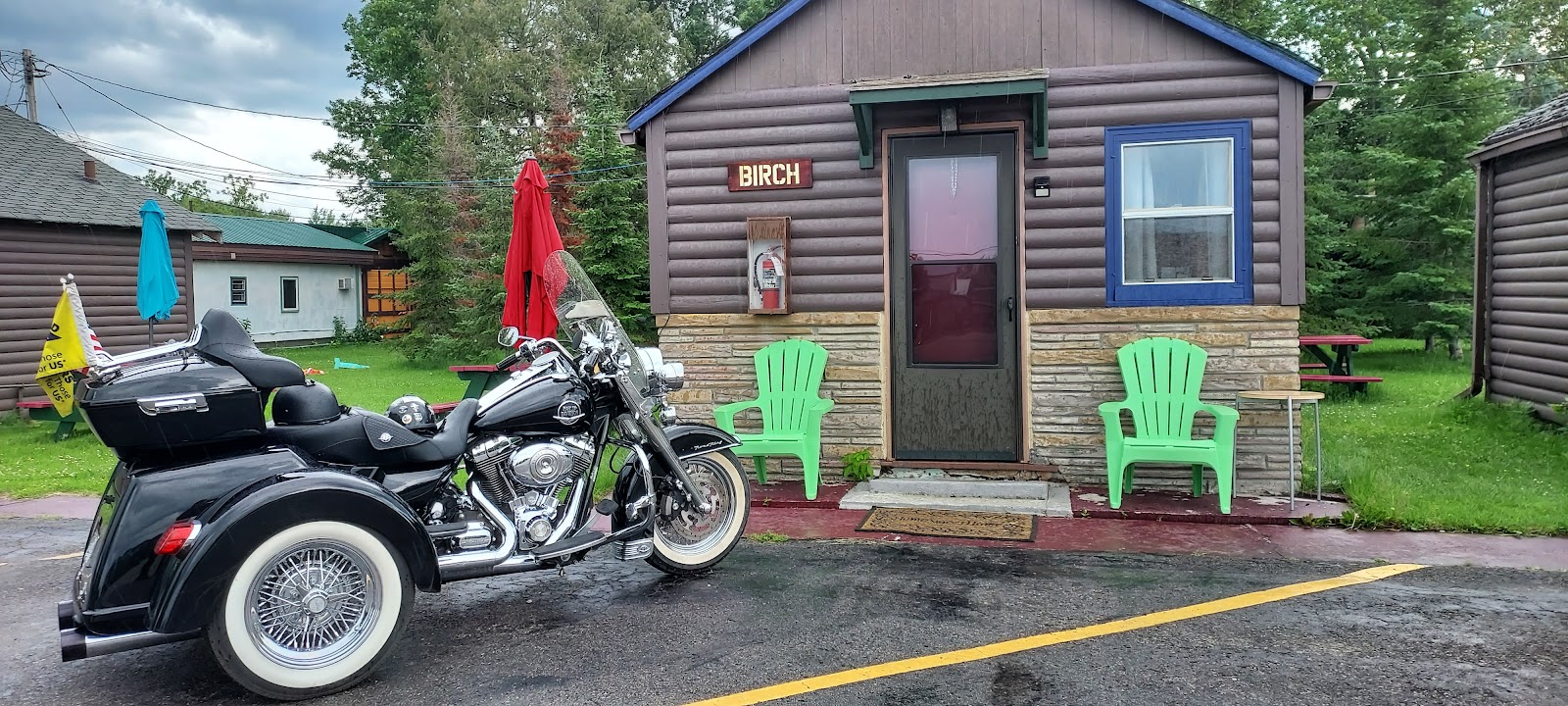 |
| Our little cabin--so cute! |
 |
| An outdoor seating area for the cabins. |
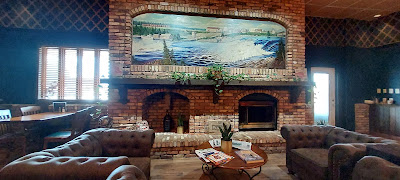 |
| A very inviting setting at "The Library" eatery. |
Early the next morning, we headed towards VNP, stopping
along the way to visit the statue of Big Vic in the Village of Ranier. Big Vic is a symbol of protest that stems
from the National Park Service (NPS) using eminent domain to confiscate
people’s private property to create VNP.
Those property owners who did not wish to sell their property to the NPS
were subjected suddenly to condemnation or limitations on the use of their
lands. Vic Davis, along with others,
believed this was government overreach.
So, he sued the government. But
the powers-that-be just printed more money, giving them unlimited resources to
countersue. Mr. Davis then came up with
a way to inconvenience the NPS: he
purchased the island of Little Cranberry and sold small parcels to others for a
mere $20/parcel, inundating the NPS with paperwork and additional landowners with
whom to negotiate purchases.
Furthermore, he commissioned the creation of the Big Vic statue, which
once stood proudly on Cranberry Island as a big middle finger to the NPS. Eventually, the NPS won the land acquisition
war, but not without a good fight from Vic Davis. We walked a bit around the rest of the
historic village, but the place was a ghost town. Most of the businesses were sandbagged and
the docks underwater from recent flooding.
 |
| The Statue of Big Vic. |
 |
| A quaint country chapel... |
 |
| The Village of Ranier was still underwater in mid-July. |
 |
| Water cisterns sit on top of Ranier docks to keep them from floating away! |
We arrived at the Rainy Lake Visitor Center within
VNP. I collected my Junior Ranger
booklet, watched not 1, but 2 very interesting films, and enjoyed chatting with
the Park volunteers. VNP consists of
218,000 acres, the majority of which are waterways. The Ojibwe Indians frequented this area,
building birch canoes for their semi-nomadic lifestyle. They hunted, fished, gathered, and traded
here. Furthermore, for nearly 200 years,
employees of the Northwest and Hudson Bay Company traveled 3,000 miles each
summer to trade goods for furs. They
rowed 16 hours a day, 50 minutes each hour.
That is one major workout! Then
when they encountered waterfalls, they had to portage over land, each carrying
a 90-pound bag for several miles over primitive terrain—and they still had to
return for the canoe! These voyageurs
had plenty of strength, endurance, and good spirits (both in attitude and
alcoholic beverages).
 |
| Family photo with Monte the Moose! |
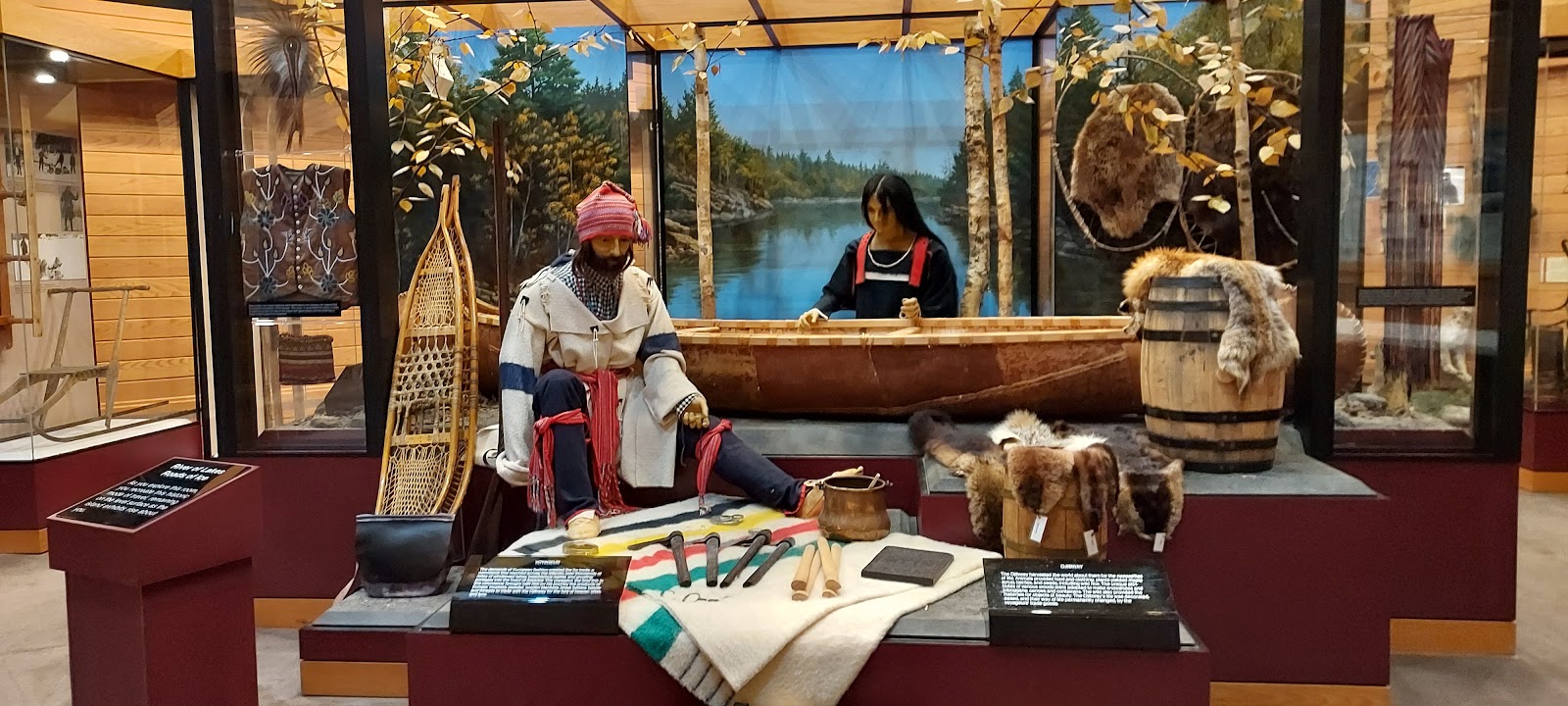 |
| One of the Visitor Center's interesting exhibits. |
VNP is open year-round, offering a completely different
experience in winter, with its trees glistening in a blanket of white and
frozen waterways that become the “roads” for snowmobiles. I sure would like to see that someday!
We departed the Rainy Lake Visitor Center and walked along
the paved Recreational Trail under ominous clouds. But the sun won its battle to shine. So, we
continued to trek, this time along the Oberholtzer Loop Trail, sampling a wild
raspberry or two along the way.
Unfortunately, we could not complete this hike because part of the trail
was submerged and other sections were impassible due to downed trees. So, we did some backtracking. We saw a little wildlife: a red squirrel, a gull, a few tiny tree
frogs, and one Super Ant who singlehandedly moved a dead worm. We also caught a glimpse of a blue heron and
eagle as they flew overhead.
 |
| I was gonna sit at this viewing bench along the trail--but it was completely submerged. |
 |
| Downed trees made the rest of the Oberholtzer Loop Trail impassible. Time to back-track. |
 |
Butterfly enjoying some nectar.
|
The next day we visited the Ash River Visitor Center,
hiking along its Blind Ash Bay Trail and a portion of its Kab-Ash Trail. We visited the Beaver Pond Overlook. I was told the beaver population in VNP is
prolific. Though I saw many fine
examples of their handiwork and lodge craftsmanship, I spotted not 1 busy
beaver. Bummer!
 |
| Inside the Ash River Visitor Center. |
 |
| A rustic cabin on the property. |
 |
| I searched for beavers... |
 |
| ...but only saw their handiwork. |
 |
| Mom's favorite: daisies! |
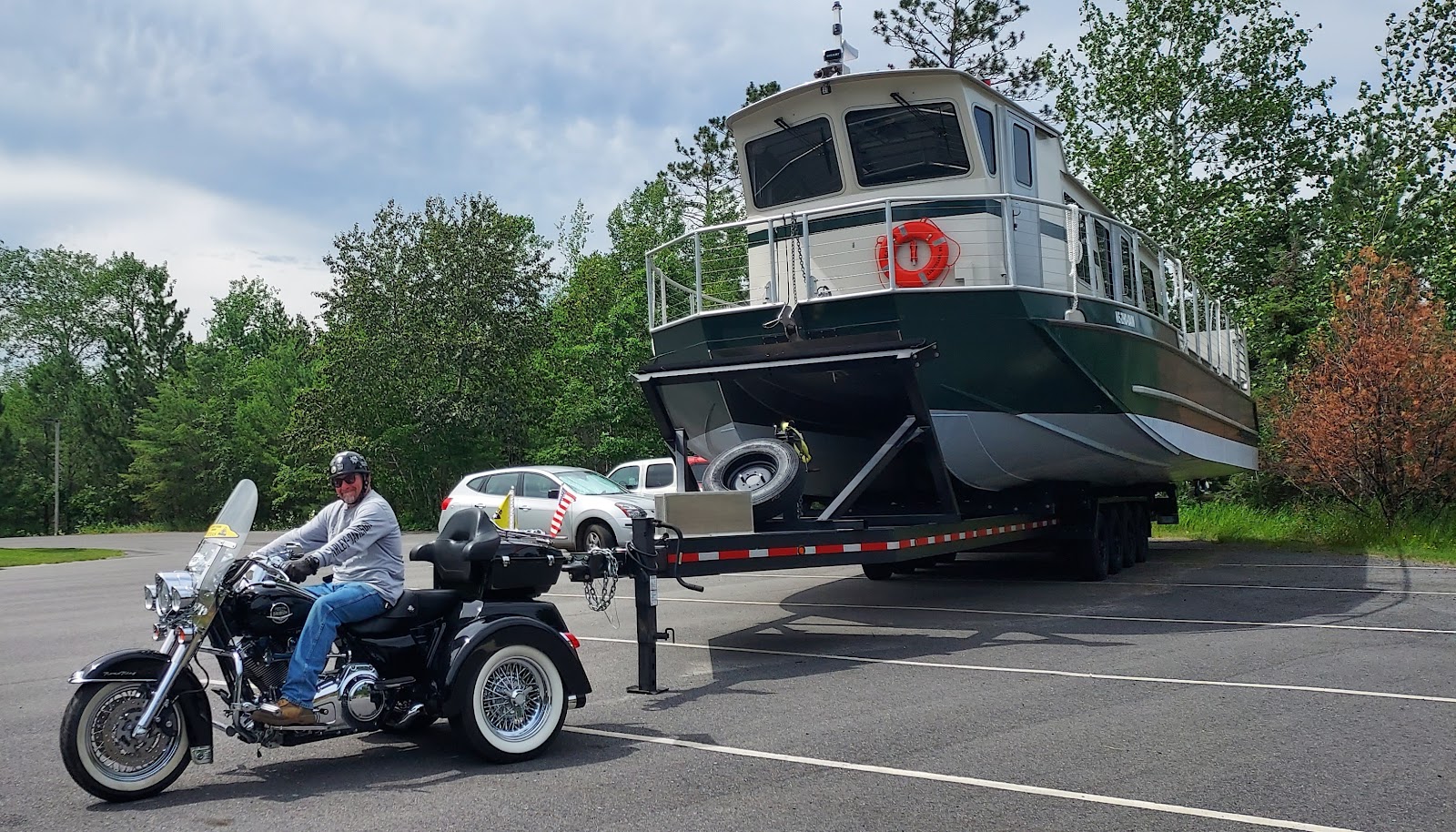 |
| Dad wished he could trailer the boat and put it in the water for us to take a tour! |
We also stopped at the Kabetogama Visitor Center,
but there was nothing much to do/see that was different from the offerings at
the other 2 Centers, though we enjoyed chatting with Ann/Paul, folks from the
Twin Cities that we kept intersecting with over the course of our 3-day visit.
 |
| Yours truly with the walleye. |
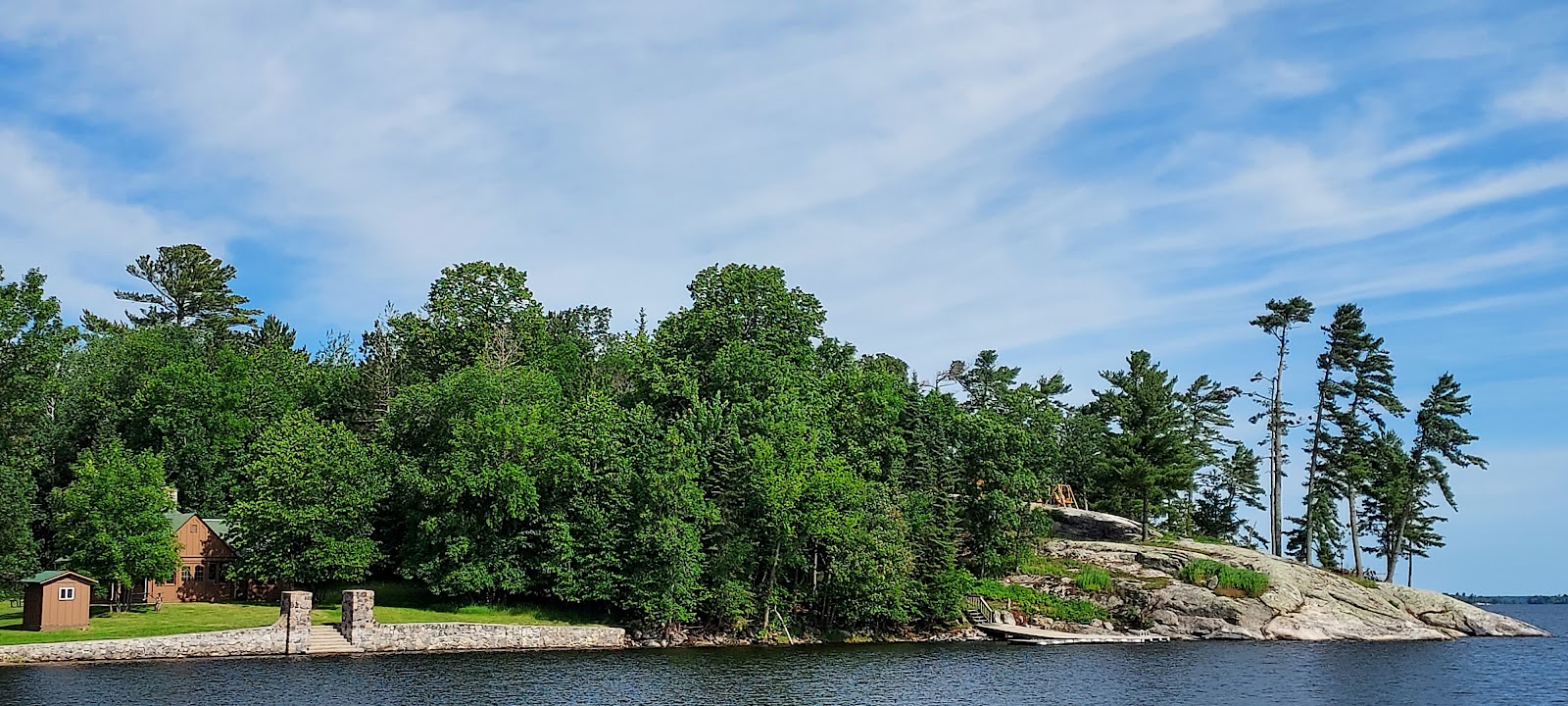
We dined each day at Thunderbird Lodge, which was just
starting to remove flood-protection sandbags from its property. The outdoor patio of the restaurant had been
7 feet underwater just a week earlier.
Furthermore, a section of MN-11 right near the Lodge had been washed out
and a temporary road installed. With
limited options, this became our go-to eatery for the rest of this trip and our
subsequent visit to VNP in August. Yes, water levels receded finally, so we got
to return for a Grand Tour boat ride just days before leaving Minnesota. And it was terrific! The Ranger gave a wonderful narrative over
the 2.5-hour ride, touching on all aspects of the Park: its wildlife, mining history, Ojibwe
inhabitants, botany, and the Voyageurs for whom the Park is named. Here’s a sampling of what I learned:
American Island was the only profitable gold mine in all of Northern Minnesota;
There are about 18 varieties of trees in the Park; The Tamarac is the only tree
that belongs to both the conifer and deciduous groups because it drops all its pine
needles once a year; Due to conservation efforts, the Park increased its mated
pairs of bald eagles from 6 to 42; Maple
sugar and wild rice were valuable commodities with which the Ojibwe traded. Taking this boat tour helped me complete my
Junior Ranger requirements, scoring yours truly another badge!
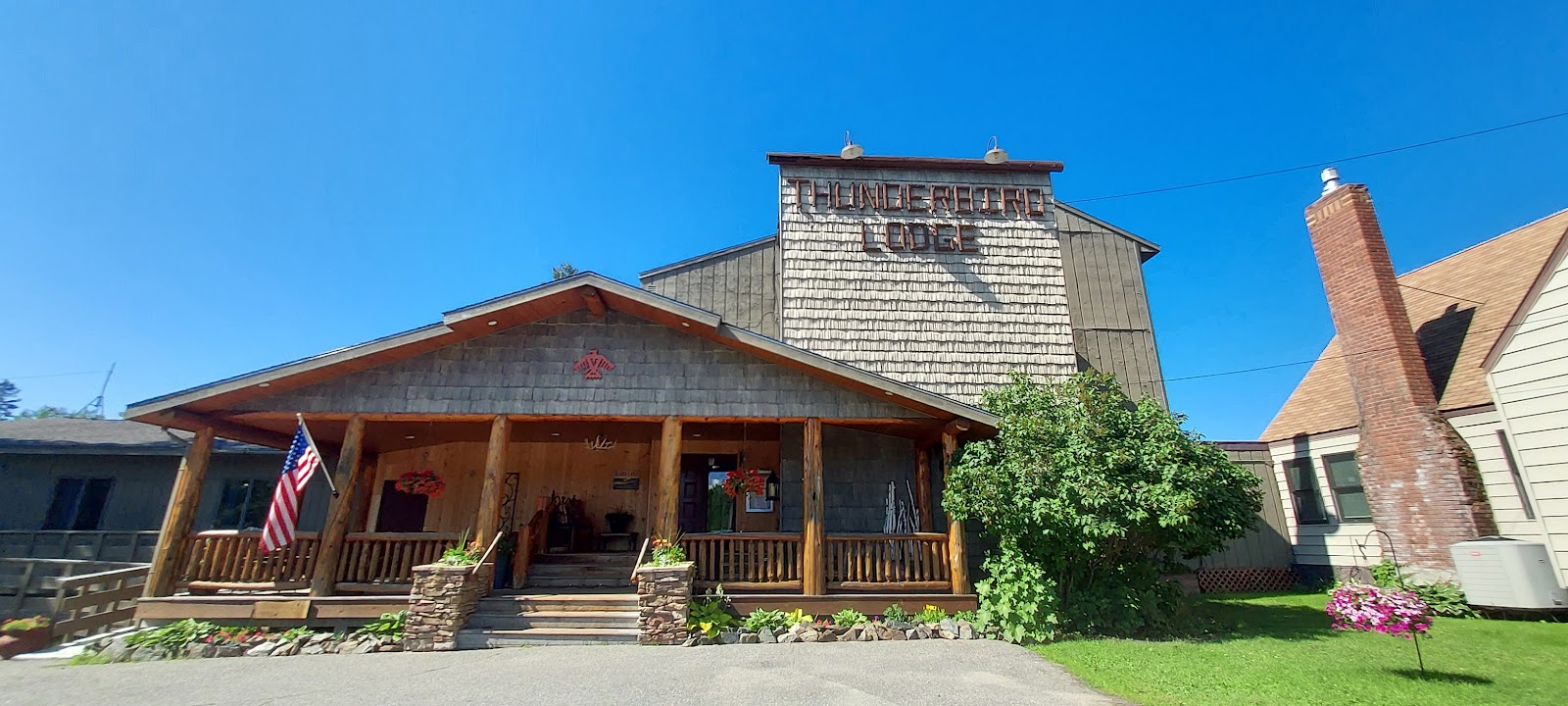
 |
| Some of the other guests at Thunderbird Lodge. |
 |
| What was once the mine shaft on American Island. |
 |
| View from the shores of American Island. |
Considering that Minnesota has the largest population of
breeding eagles in the contiguous U.S., they were eluding us for the longest
time. But I’m excited to say that we
viewed at least ½ dozen of them while on this boat tour!
 |
| See the nest on this tree? |
 |
| One of the many eagles we spotted while on the boat trip. |
We could now cross touring VNP off our bucket list!
We visited several more places while volunteering in
Minnesota, which I’ll tell you about in my next post. Talk to you soon!








































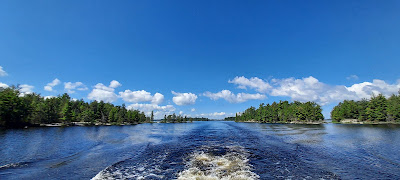
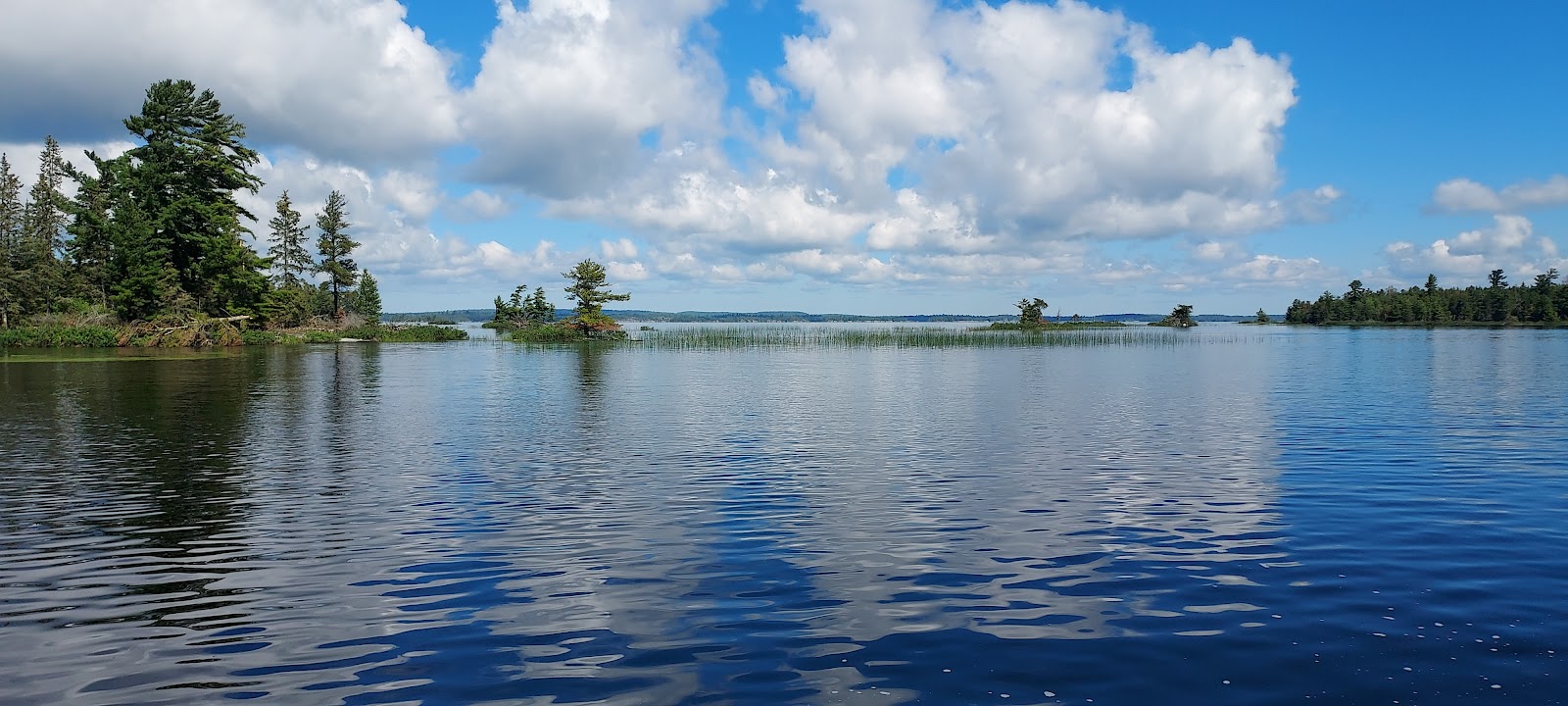



No comments:
Post a Comment